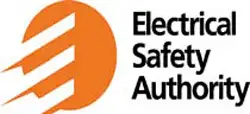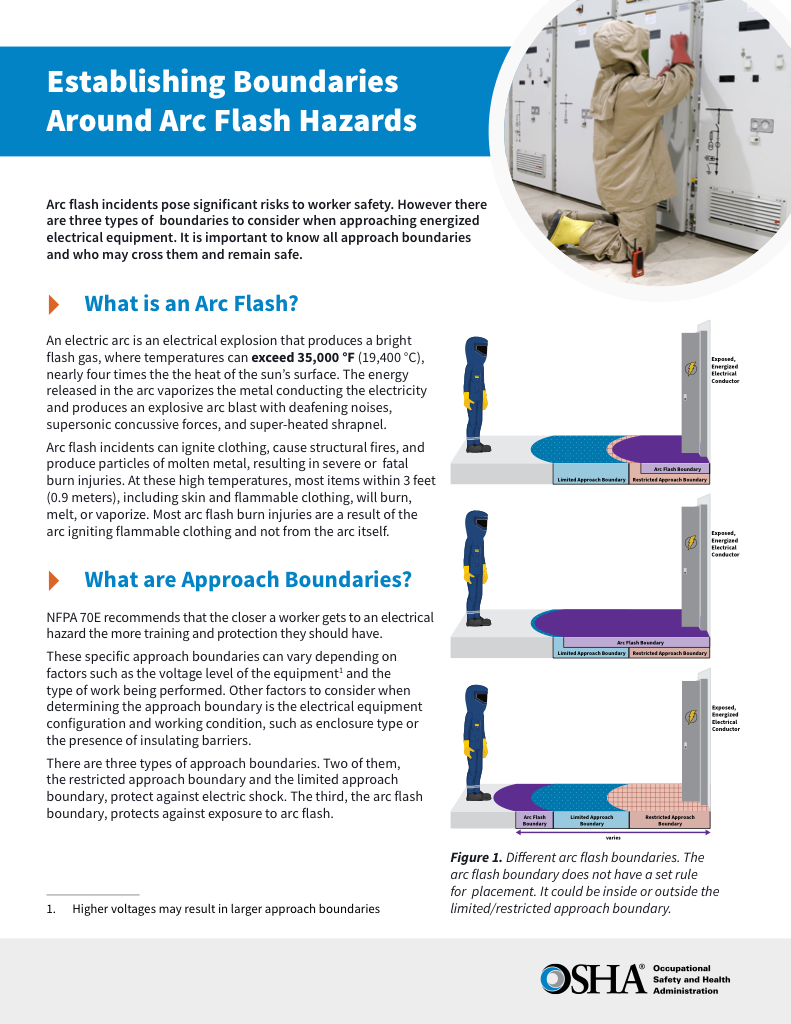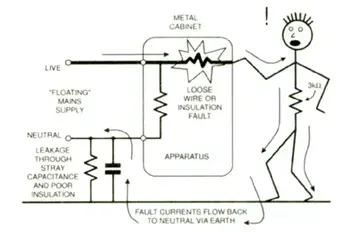Electrical Safety Authority Explained

CSA Z462 Arc Flash Training - Electrical Safety Essentials
Our customized live online or in‑person group training can be delivered to your staff at your location.

- Live Online
- 6 hours Instructor-led
- Group Training Available
Download Our OSHA 4474 Fact Sheet – Establishing Boundaries Around Arc Flash Hazards

- Understand the difference between arc flash and electric shock boundaries
- Learn who may cross each boundary and under what conditions
- Apply voltage-based rules for safer approach distances
Electrical Safety Authority oversees inspections, compliance, and code enforcement for electrical engineering systems, certifying installations, issuing permits, auditing contractors, and mitigating arc-flash, grounding, and wiring hazards through standards, testing, and risk assessment.
What Is an Electrical Safety Authority?
An Electrical Safety Authority enforces codes, certifies installations, and oversees electrical inspections and licensing.
✅ Enforces electrical codes, standards, and safe work practices.
✅ Issues permits, performs inspections, and certifies installations.
✅ Conducts arc-flash studies, grounding audits, and compliance reporting.
The Electrical Safety Authority (ESA) of Ontario is a not-for-profit corporation, and operates as the administrative authority under the Electricity Act. The Authority is responsible for ensuring that the Ontario Electrical Safety Code is followed under the Electricity Act. For a practical overview, the Electrical Safety knowledge hub provides context for Ontario's framework, helping readers connect standards to day-to-day compliance.
The Authority is designated by Ontario Regulation 89/99 as “the responsible authority for purposes of section 113 of the Electricity Act, 1998 and regulations made thereunder. “The only such regulation is Ontario Regulation 164/99 as amended by Ontario Regulation 10/02. This regulation adopts, by reference, the Canadian Electrical Code together with specific Ontario amendments and is referred to as the Ontario Electrical Safety Code (OESC).” Further explanation of code adoption and enforcement is summarized in the Electrical Safety Regulation guide, which outlines jurisdictional roles and harmonization with national codes.
The OESC is law in Ontario, and as such is updated every four years by a number of committees representing electrical expertise and knowledge from across Canada and the United States. These experts include provincial government ministries staff, manufacturers, electric utilities, electrical contractors, consumers, consulting engineers and certification organizations. These periodic updates drive changes in safe work methods described in the Electrical Safety Work guidance, influencing procedures for contractors and utilities.
FREE EF Electrical Training Catalog
Download our FREE Electrical Training Catalog and explore a full range of expert-led electrical training courses.

- Live online and in-person courses available
- Real-time instruction with Q&A from industry experts
- Flexible scheduling for your convenience
The OESC lays out the legal requirements of safe installations, and the associated products and equipment within the province. Compliance also depends on certified equipment categories listed in the Electrical Safety Products directory, aiding specification and procurement decisions.
Visit our Ontario Electrical Safety Code Training Course
Background material on code sections is compiled on the Ontario Electrical Safety Code page, which many trainees review before instructor-led sessions.
The Electrical Safety Authority is available online for Ontarians to ask questions on such topics as:
- Service Inspection
- Rough-in Inspection
- Kitchen Outlets & Circuits (GFCIs)
- Final Inspection
- Wiring & Wiring Methods
- Recessed Lighting Requirements
- Panelboards
The Electrical Safety Authority is also responsible for identifying/developing proposals for new regulations. Part of the process includes all the preparatory work to support any such proposals, and does involve detailed stakeholder consultations. Insights from provincial initiatives, including the Electrical Safety Ontario 2015 overview, illustrate how consultation outcomes translated into measurable safety priorities.
In 2004 the government of Ontario amended the Electricity Act of 1998 to so that the Electrical Safety Authority could address concerns about electrical safety, developing consistent provincial standards for the licensing and training of electricians. Now there is a framework in place, administered by the Electrical Safety Authority for the licensing of electrical contractors and master electricians in compulsory electrical trades.
Since January 1, 2007, it is illegal for someone to operate an electrical contracting business in Ontario without first obtaining an electrical contractor license from the ECRA/Electrical Safety Authority and no person may assume the role of a master electrician without first obtaining a master electrician license. The Ontario Building Code includes a limited number of provisions governing electrical equipment and fixtures primarily dealing with location within a building. For comparative context, many practices align with benchmarks noted in OSHA’s electrical standards, informing cross-border training and auditing approaches.
Any questions regarding the Electrical Safety Code can be answered by going online to the Electrical Safety Authority website: www.esafe.com, or by phoning 1-877-ESA-SAFE.
Visit Our Ontario Electrical Safety Code Page







